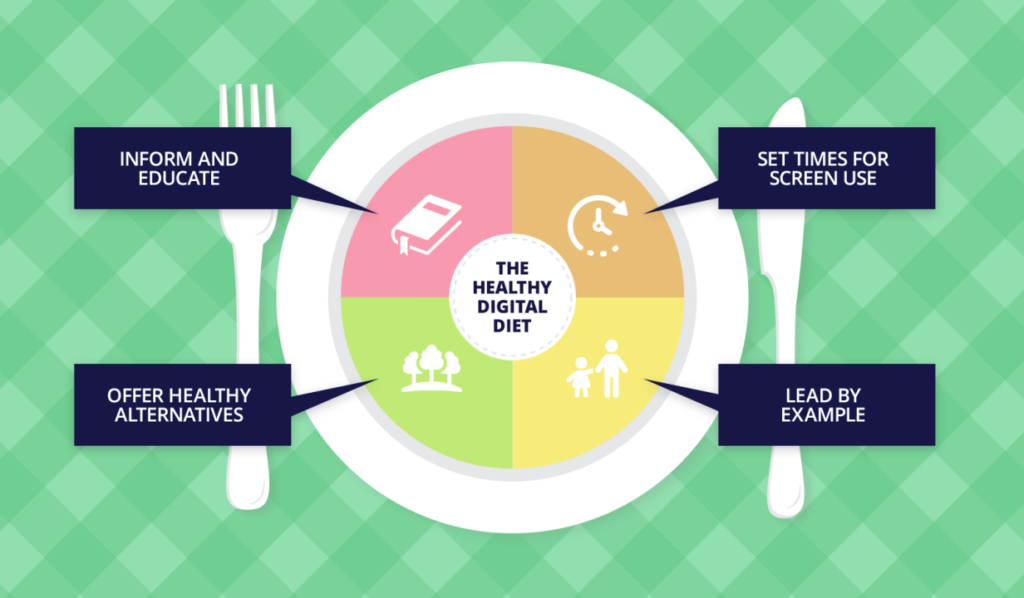The entanglement of lifestyle and digital devices is undeniable in today’s technology-driven society. This integration offers immense benefits such as enhanced connectivity and streamlined workflows. However, it also presents significant health challenges, from the nutritional deficits of a sedentary lifestyle to conditions like electromagnetic hypersensitivity (EHS). Below, we’ll explore effective strategies to balance optimal nutrition and mindful technology usage.
Understanding Electromagnetic Hypersensitivity
Electromagnetic hypersensitivity (EHS) is characterized by adverse reactions purportedly caused by exposure to electromagnetic fields (EMFs). Symptoms may include headaches, fatigue, stress, and sleep disturbances. Understanding and mitigating the potential health impacts of electromagnetic hypersensitivity is crucial as the use of electronic devices becomes increasingly prevalent.
Preventive Measures for Reducing EMF Exposure
● Tech-Free Zones: Designate areas where electronic devices are discouraged in your home to minimize EMF exposure.
● Limit Device Use: Reduce the time spent on electronic devices, especially before bedtime, to help your body recover from daily EMF exposure.
● Opt for Wired Connections: Using wired internet connections can decrease your exposure to wireless EMF emissions.
The Role of Superfood Nutrition in Modern Diets
The modern diet often lacks essential nutrients, especially for tech-heavy lifestyles. Superfoods, such as avocados, play a crucial role in supplementing our diet with necessary vitamins and minerals. These foods, known for their dense nutrition, offer significant health benefits, including improved heart health, vision protection, and digestive health.
Nutritional Powerhouses
● Heart Health: Avocados are high in potassium and monounsaturated fats, which are beneficial for maintaining healthy heart function.
● Vision Protection: They contain antioxidants like lutein and zeaxanthin that help protect against eye damage.
● Digestive Health: The fiber content in avocados aids in digestion and helps maintain a healthy digestive tract.
Addressing Sedentary Lifestyles with Active Breaks
The shift toward remote work and increased consumption of digital media has significantly increased sedentary lifestyles, heightening the risk of numerous health issues, including cardiovascular disease, diabetes, and chronic back pain. Counteracting this trend requires incorporating more physical activity into our daily routines, even in small increments.
Exercise Programs for Small Spaces
Small-space exercise programs are ideal for individuals working long hours at a desk or who have limited room to move. Here are some efficient exercises that can be performed in a limited space:
● Desk Yoga: Simple stretches and poses that can be done right at your desk, such as seated twists or desk-facing standing poses.
● Resistance Band Workouts: Compact and versatile, resistance bands provide an excellent workout for strength training and flexibility.
● High-Intensity Interval Training (HIIT): Short bursts of intense exercise followed by rest periods, perfect for quick sessions that can fit into a break period.
Ergonomics and Workplace Design
Creating an ergonomic workplace is essential to prevent strain and injury during long periods of sitting. Consider these tips:
● Adjustable Chairs and Desks: Invest in chairs and desks that offer good support and can be adjusted to fit your body size and workspace needs.
● Monitor Placement: To avoid neck and eye strain, ensure that your monitor is at eye level and about an arm’s length away.
● Frequent Position Changes: If possible, change your position regularly from sitting to standing, and take short walks to keep the blood flowing.
Enhancing Mental Health in a Digitally Dominated World
The pervasive nature of digital technology can have profound effects on mental health, impacting everything from stress levels to sleep patterns. Addressing these issues involves conscious strategies to manage how we interact with technology.
Detailed Mindfulness Practices
Mindfulness can significantly mitigate the stress of digital overload. Here are a few practices tailored for the digital age:
● Digital Mindfulness Meditation: Dedicate time for meditation that specifically addresses and processes the stimuli from digital interactions.
● Controlled Consumption: Set specific times for checking emails and social media to reduce constant connectivity and its associated stresses.
Technology and Mental Health
The relationship between technology use and mental health is complex, requiring careful management to prevent issues such as anxiety and depression:
● Scheduled Digital Detox: Regularly schedule periods where digital devices are turned off, especially during family meals and before bedtime.
● App and Notification Management: Use app blockers and notification settings to reduce distractions and manage time spent on devices.
Lifestyle Integration for Long-Term Health
Maintaining a balance between technology use and health requires long-term strategies and lifestyle integration. This not only fosters better health but also ensures sustainability.
Long-Term Planning
● Regular Evaluations: Periodically review and adjust your tech and health routines to respond to changes in lifestyle, technology, and health needs.
● Adaptive Tools and Apps: Utilize apps that track health metrics and provide personalized advice to stay on top of your health goals.
Community and Support
● Online Communities: Join forums or groups focused on healthy living, ergonomics, and digital wellness.
● Local Workshops: Participate in or organize local workshops on nutrition, exercise, and tech wellness to engage with like-minded individuals and learn new strategies.
Waking Up to the Dangers of Pediatric Sleep Apnea and Sleep Deprivation(Opens in a new browser tab)
Harnessing the Best of Both Worlds
By understanding the dual challenges of maintaining nutritional balance and managing safe technology use, we can create a sustainable lifestyle that harmonizes our biological needs with the demands of a digital world. Adopting a mindful approach to diet and technology safeguards our health and enhances our overall well-being in this digitally saturated era. Through proactive dietary choices, like incorporating superfoods and strategic tech management, we can thrive amidst modern ailments and enjoy the benefits of a connected life without compromising our health.
